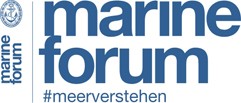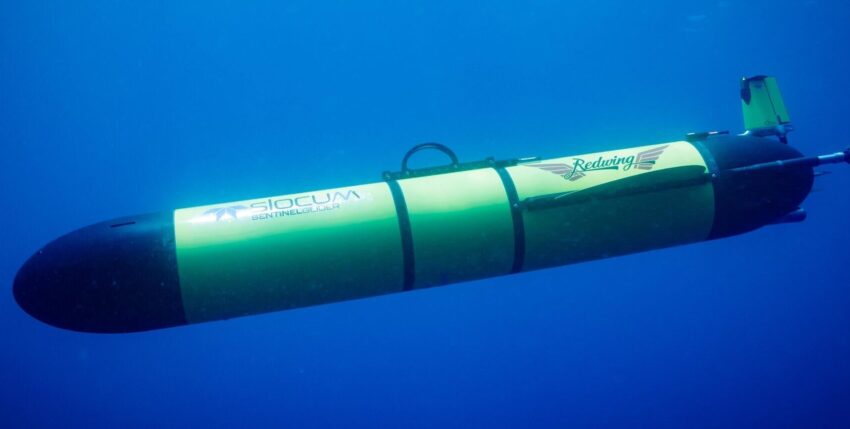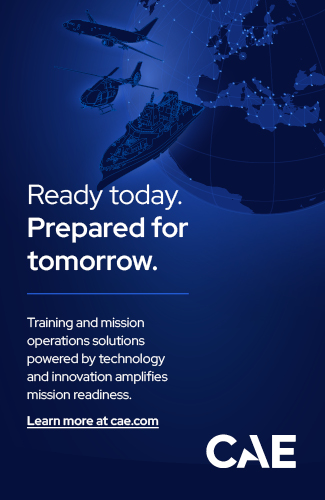The "Redwing" underwater mission: what the new glider can do - and what it (doesn't) do for defence and security
On 10 October 2025, Teledyne Marine (Thousand Oaks, California) and Rutgers University (New Brunswick, New Jersey) sent the Slocum Sentinel Glider "Redwing" off Martha's Vineyard (Massachusetts) on a circumnavigation of the Earth lasting up to five years - according to the initiators, the first ever world circumnavigation by an autonomous underwater glider. The aim is to continuously collect temperature, salinity and density data (CTD) in marine regions that have been poorly surveyed to date and to feed this data into global models in near real time. The project is supported by NOAA (National Oceanic and Atmospheric Administration, US Department of Commerce), the UN Ocean Decade and the Marine Technology Society, among others. International trade and technology media emphasise the scientific pioneering character of the undertaking: the mission is classified as the "world's first" of its kind and is associated with great expectations for improved weather and ocean forecasts.
Technology and mission profile
"Redwing" is a Slocum Sentinel glider specially designed for long distances and endurance. It combines classic gliding by means of a variable buoyancy chamber with an enlarged buoyancy engine and position-dependent switchable auxiliary propellers to bridge short counter-current phases. As a rule, the glider reports its position and measurement data every 8-12 hours via Iridium/GPS. After each surfacing, the mission leader adjusts the course in order to optimally utilise the current fields of the sea area. Planned maintenance stops (e.g. Gran Canaria, Perth, Wellington, Falkland Islands, possibly Brazil/Caribbean) allow sensor and battery replacement as well as biofouling cleaning.
Of less scientific interest is the sensor technology (CTD, altimeter, inertial sensors) than the enormous spatial-temporal dwell time along a quasi-global route. Rutgers and WHOI (Woods Hole Oceanographic Institution, Massachusetts) have been using densely distributed gliders to collect data for years - "Redwing" is intended to extend this data collection to areas that were previously difficult to access.
Classification: Gliders vs. "classic" AUVs/XL UUVs
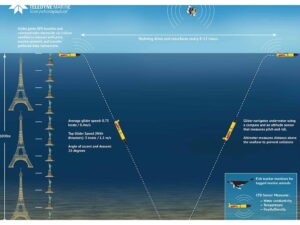
Glider principle: Systems such as Kongsberg's "Seaglider", ALSEAMAR's "SeaExplorer" or MRV/Scripps' "Spray" move at low energy in "sawtooth" profiles between the surface and depth (typically 200 to 1,000 metres) at a cruising speed of around 0.5 knots. Endurance and costs per nautical mile are unbeatable, but speeds are low. The platforms carry physical, bio/geochemical and acoustic sensors and transmit their data via satellite as they surface.
AUV/XL-UUV principle: Large, propeller-driven, highly autonomous UUVs such as DARPA/Northrop Grumman's "Manta Ray" (USA) or Anduril's "Ghost Shark" (AUS) are aimed at long ranges, large payloads and military reconnaissance/combat profiles. They often combine buoyancy, propulsion and control modes, but require significantly more energy/logistics. The unit and mission costs are orders of magnitude higher. Australia recently launched "Ghost Shark" as a defence project (1.7 billion Australian dollars) for fleet development; "Manta Ray" completed full-scale sea trials in 2024.
Conclusion: Numerously deployed gliders provide "broad, deep, long" environmental and situational images - with a minimal signature and cost profile. XL-UUVs deliver "deep effects" (ISR, deception, possibly active agents), but are scarce and expensive. As a glider, "Redwing" is an example of "persistent sensing" - not "persistent effects".
Comparison of "Redwing" with other gliders
- Kongsberg "Seaglider" (up to approx. 1,000 m water depth, deployments lasting months, classic CTD carrier): established in oceanography and (US) navy, robust COTS platform.
- ALSEAMAR "SeaExplorer" 1000/1000-M (up to 1,000 m, 0.5-1 kn, up to approx. 110 days; "M" with acoustic AI/edge processing, encryption, networkable): recently procured by the French Navy (5 systems) for underwater acoustic reconnaissance and tested in NATO exercises.
- MRV/Scripps "Spray" 2 (Modernised version of the proven spray type, higher range/usable space, easy maintenance): widely used scientifically.
What makes "Redwing" different? The added value lies less in the sensors than in the mission geometry (global orbit) and the logistical concept (worldwide maintenance option). Compared to standard gliders, "Redwing" relies on greater buoyancy reserves and optional propulsion to compensate for short-term currents.
Possible military use
Gliders offer three relevant aspects for the German Navy or a NATO navy in the North Sea/Baltic Sea:
- Rapid Environmental Assessment (REA) & Acoustic Intelligence (ACOUSTINT): Dense measurement series on temperature, salinity and depth (CTD), together with sound velocity profiles, provide a precise picture of how sound propagates underwater. On this basis, submarine hunting and mine defence measures can be planned in a more targeted manner: which sensors (e.g. sonar buoys, towed sonars) should work at which depth, where shadow zones can arise and where sound travels further. In short: the profiles show where you can hear - and where you can't. This increases the probability of a hit and saves time. SeaExplorer fleets have demonstrated precisely this role in NATO situations.
- Critical infrastructure protection: Persistent, low-power sensor carriers can operate along pipelines, power/data cables and offshore parks, detect hydrographic anomalies and unusual acoustic patterns and relay alarms to surface sensors (USV/buoy) or coastal stations. France's procurement emphasises that gliders, as distributed sensors that are difficult to detect, are a complementary pillar of underwater reconnaissance.
- Cost/mass factor: Where XL-UUVs are rare, a "glider network" deployed in the sea area allows a continuous, scalable database - the basis for multi-static underwater warfare (ASW) and anomaly detection by on-board AI (edge AI), i.e. the data is pre-evaluated directly in the glider.
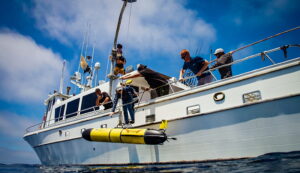
However, gliders are no substitute for reaction/agent carriers. They are slow, have limited manoeuvrability and are unsuitable for kinetics. In highly dynamic situations (e.g. tracking a submarine contact), fast AUVs/USVs/helicopters/sensor buoys are required. In the Baltic Sea with its dense shipping and fishing industry, collision and accident risks are manageable. In response to our enquiry, "Redwing" is attempting to counter this with practicable countermeasures. These include operating at depths of 200-1,000 metres, planning surface cycles and route planning away from main traffic routes.
The practical stumbling blocks lie less in the technology than in the operation at sea: a glider cannot simply be launched anywhere. Authorisations are required for coastal waters and EEZs. And, if necessary, proper coordination with the coastguard, traffic centres and fisheries. In addition, there is an obligation to provide assistance in emergencies, clear rules on data sovereignty and protection against manipulation or theft when the glider surfaces.
Summary
Apart from the ambitious world tour, "Redwing" does not set any new technological or military standards. Its added value lies in the breadth, duration and reliability of data collection and in the implementation of the technology in operational practice and utilisation.
For Germany and NATO in the North and Baltic Seas, gliders could be used primarily as sensors for area-wide, long-term environmental and situational awareness.
Whether "Redwing" actually circumnavigates the globe remains of secondary importance. What is probably more important is whether the mission confirms the control and monitoring procedures used in such a way that reliable everyday operation is possible.
https://www.youtube.com/@teledynemarine2170
